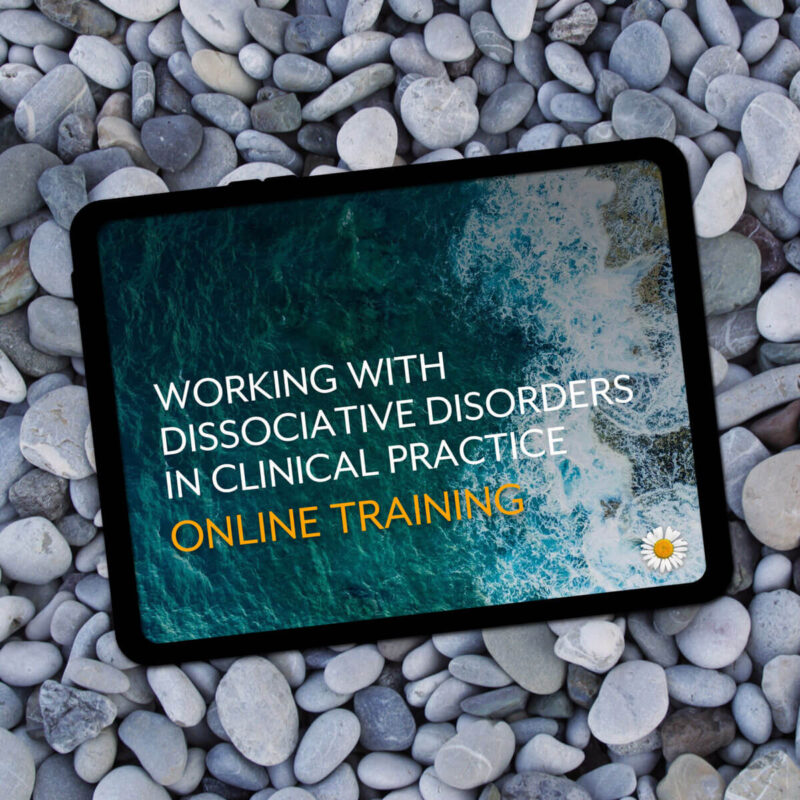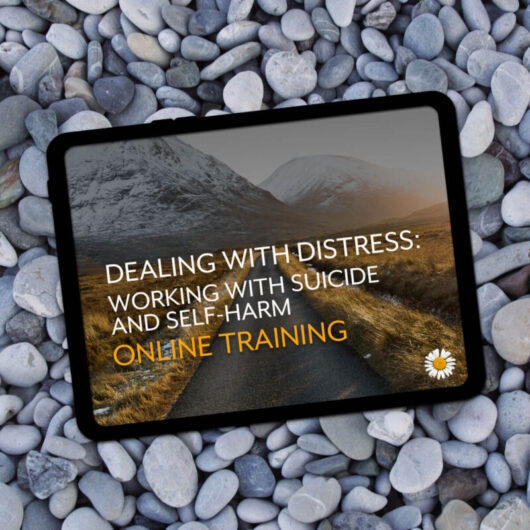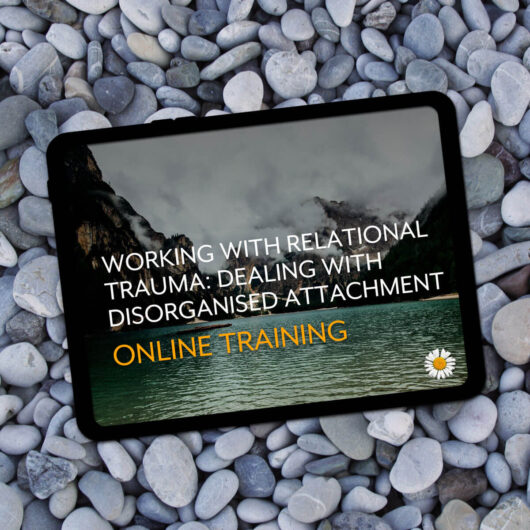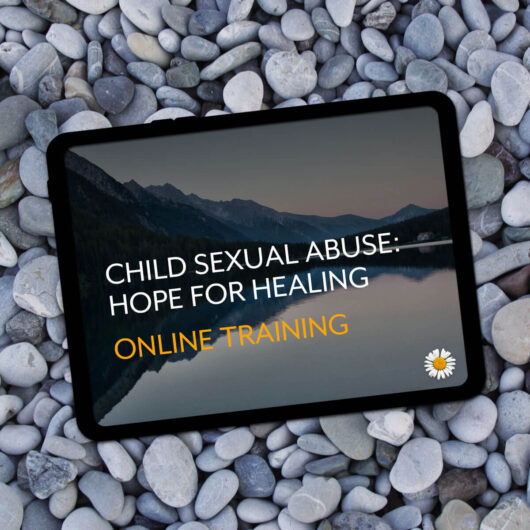Dissociative identity disorder (DID) is the term we give to a set of responses to trauma which are the natural outcome for a childhood of unremitting unsafety, and which result in a fragmented sense of self and disorganised attachment in adulthood.
Join me as I explain how to work with compassion and empathy with people who have suffered the most extreme forms of early life trauma, and expound a treatment roadmap including the principles and pitfalls of this complex work.
“The only thing I regret about completing this course is that I hadn’t done it sooner!
As I progressed through the modules, I was often reminded of past clients who would have benefited from me knowing more about dissociation and how to support them in their recovery. I am left feeling more confident in my ability to work with my clients on the path to a more fulfilling, rich life and am looking forward to learning more through completing additional courses here.
Thank you for your willingness to share your experiences, Carolyn – it is making an enormous difference for those of us who work as counsellors, and more importantly for the clients we work with.”
“Excellent training. Really helped me in my clinical work as a psychotherapist. Carolyn is such a clear trainer and gives fantastic explanations to things which happen daily within my work. I also love the amount of information and PDFs I have been able to access and use at work. I would highly recommend this training to anyone working with trauma.”
“This course was so helpful for me as an experienced psychotherapist, but I really wish I’d done it when I was first qualified. It really is a case that you don’t know what you don’t know!! I am slightly horrified now that I was let loose on clients without what really ought to be foundational knowledge. I can’t believe that trauma is so poorly covered in our core training. This course ought to be part of it!”
“A very informative training. Practical and easy to understand. I loved the amount of resources you provided for the training – all of the additional reading added to the content of the course and furthered my learning. I have come away from the course with confidence in my practice and my ability to support my clients with dissociative disorders. Thank you very much!”
“Even though I have had a good amount of training in trauma and the aftereffects on the body and nervous system, I found your course incredibly helpful and useful. The language you use is free of jargon, and not only does that help me deepen my understanding of the complex neurobiology, but it also helps me deliver simpler and more succinct psychoeducation to my clients. The value of the course is exceptional, I very much appreciate that it is affordable. Also, for me it is fantastic that I can watch it again and again, as my brain doesn’t retain information as well as it used to. I do have great respect and admiration for your work, how much you share your own personal experience, and that in itself is such an empowering example for us as therapists as well as for our clients with DID.”
“The language used was just right and the analogies were so clear and easy to understand even complex things. I loved how personal experience was linked into this to help in our understanding of things by not just a trainer but also a survivor. The lessons were succinct and so length felt sufficient, a lot of basics were covered in the length of lessons and all was looked at as a whole. Nicely structured. Other links were also really insightful, relevant and helpful.”
“Incredibly helpful. Both reassuring to the clinician who may be inexperienced with DID, and full of concrete pointers for my most urgent questions (e.g. ‘How to address the parts?’) The videos were the right length to get in-depth to a subject matter without making me tune out (I have trouble staying focused on a video lecture for too long.) I appreciated the additional reading resources to give me a sort of intuitive, case-study grip on the material.”
“I think it was all totally brilliant, I loved listening to Carolyn, the quality of her voice and the calm measured delivery, full of confidence in the possibility of recovery from such horrendous, life-threatening abuse.”
“It was truly exceptional. Carolyn makes things easy to understand without missing out the complex and meatier subject matter or the science behind it.”
“A very good experience to equip me to work with dissociative disorders in my practice. It has helped my understanding and given me more confidence in my being able to be more with DID clients. It was easy to use and I could pace it to suit my own needs. It could be done at home and was very user-friendly. I was very impressed by the whole training.”
“A very thought-provoking, insightful course, one in which I’ve taken some useful information to use with current, and future clients in my therapy sessions. It was also a very emotional experience for me as an individual. Thanks, Carolyn, keep up the good work.”
“I have been extremely impressed Carolyn with your course Working with Dissociative Disorders in Clinical Practice and look forward to using your strategies with my clients. I found the course very user-friendly and enjoyed completing it and look forward to accessing more of your online courses. The course will be invaluable in my practice.”
- Available instantly upon purchase
- No set schedule – work at your own pace
- 6 hours of CPD with certificate upon completion
- Downloadable resources and additional reading for a comprehensive learning experience including:
- Course Notebook (with space for notes, reflection questions, session summaries, references and links)
- PowerPoint handouts (two versions, one with space for notes, one for easy printing)
- Set of psychoeducational posters (full-colour and low-ink versions)
- MP3 audio files
- Videos available to stream or also downloadable for offline viewing
- Lifetime access
- Start/stop and return as often as you like
- Easy to use: only needs a web browser and PDF reader
- Individual licence only: for multiple users and information about discounts for organisations, please click here.
When a young child grows up in an environment of perpetual threat – abuse, emotional neglect and abandonment, an attachment figure who is also a perpetrator – then how else can they survive psychologically except by saying, ‘This isn’t happening’ and ‘This isn’t happening to me?’ This is the essence of dissociative identity disorder – a separation of the psyche into parts of the personality who know about the trauma and are permanently on the defensive against it, and parts of the personality who don’t, and whose role is to get on with daily life free of that crippling consciousness.
DID is therefore the natural outcome for a childhood of persistent threat where it is not safe to signal for help: the child learns to hide what is going on, even from themselves. As adults with DID, then, there may appear to be no sign at all of the trauma, as the mind successfully segregates awareness of it away from conscious thought. Clients with dissociative identity disorder don’t always know that they have been traumatised. And that’s why it’s essential that every counsellor and psychotherapist should have a good grounding in dissociative disorders, so as not to collude with dissociation and avoidance, and thereby fail to help the client for whom hiddenness has become a way of life.
Working with dissociative disorders is working with trauma; working with complex trauma often involves working with dissociative disorders. This training therefore provides a grounding in working with all clients, not just those whose trauma is evident, or who have clearly identified DID.
DID is by its very nature confusing, contradictory and hard to pin down. What better insight therefore into therapy for DID than ‘straight from the horse’s mouth’ – because this course is based on my first long-term stint of psychotherapy, starting before either I or my therapist were aware of dissociative disorders. We worked together over a number of years to begin to bring my dissociated trauma to light and to re-regulate and integrate it.
The course will take a neurobiologically-informed approach, meaning that I look at how the body and brain’s natural defences have been stimulated by overwhelming threat, and how that response has become stuck and then manifests in the complex behaviours of a trauma-related disorder. I look at the brain science behind this and present various paradigms which help to make the complex simple, including the concept of the back brain and front brain, and how recovery from trauma involves a continual shift away from survival-based, back brain reflexes into more adaptive, elective, front brain choices.
This course won’t just present the theory in a disembodied, abstract way, but will explain it with insightful metaphors and my own experience, answering the burning questions that so many therapists have when working with this client group, including:
- How should you engage with ‘parts’?
- How can you avoid ‘re-traumatising’ the client?
- How do you work with a client who can’t properly remember the trauma?
- What do you do with the client who cannot stay present during a session?
- How do you deal with dependency?
- Is integration the goal?
- How do you pace sessions?
- What do you do if you can’t get the adult ‘back’ at the end of a session?
- How do you deal with stuckness?
- How do you avoid traumatic reenactments within the therapy room and the therapy relationship?
- What pitfalls are there in this work?
- How do you look after yourself whilst working with such demanding and at times overwhelming content and trauma?
- How do you deal effectively and empathically with self-harm and suicidality?
- How do you process traumatic memories?
- Do you allow the client to ‘switch’ or do you keep the ‘adult’ present?
- and many other questions
This course is aimed specifically at counsellors, psychotherapists, psychologists and other professionals working in a clinical setting (including private practice) with clients who have experienced childhood trauma. You will also find the course of relevance if you do not directly work with traumatised people in a clinical setting but you have an interest in this field, including as a survivor yourself. Please just be aware that the primary emphasis will be on a therapeutic setting, although many of the principles could be extrapolated into other contexts.
Intro Video from Carolyn
Session Summaries
Session 1 – Introduction
- Exploring trauma as an adaptation to life-threatening powerlessness rather than merely a distressing event
- Exploring the concept of trauma ‘concealing itself from awareness’
- Exploring the likelihood that many trauma clients may be ‘dissociative for being dissociative’
- Exploring especially self-derogatory explanatory frameworks to explain symptoms and struggles
- Exploring the impact of replacing these frameworks with trauma-informed ones
- Exploring the fundamental expectations of many dissociative clients of the therapeutic process, including the potential need to ‘tell their story’ or the passive desire for rescue
- Exploring the role of the therapist’s belief in the client to facilitate recovery
- Exploring the need for a therapeutic focus on root causes (trauma) rather than symptoms (multiplicity)
Session 2 – Principles
- Exploring therapists’ drive for quick-fix tips and techniques
- Exploring the alternative offer of an overarching framework to guide the therapeutic work
- Understanding dissociative identity disorder as an adaptation to trauma rather than as ‘mental illness’
- Exploring the difference between a focus on integrating ‘parts’ (fused or resolved multiplicity) versus integrating ‘the trauma’ (processing unresolved experiences)
- An introduction to a trauma resolution pathway involving recovery (re-regulation) and integration (processing)
- Exploring the voyeurism often evoked by a dissociative presentation, especially when detached from its causes
Session 3 – How does trauma lead to a dissociative disorder?
- Exploring trauma not as a distressing event but as a neurobiological adaptation to danger
- Understanding humans’ evolved sequence of response to threat, including perspectives from polyvagal theory and a ‘window of tolerance’
- Understanding each of the stages in the ‘sequence of defensive responses and recovery’ and how trauma truncates the sequence and therefore becomes ‘stuck’
- Exploring the neurobiological meaning and reality of ‘being traumatised’
- Understanding how dissociative disorders develop within this context with reference to the theory of structural dissociation
Session 4 – You, the therapist
- Considering some of the demands placed upon a counsellor/therapist when working with dissociative disorders
- Exploring the need for self-care and self-management when working with dissociative clients and how to implement this, in particular around boundaries and contracting
Session 5 – Safety and neuroception
- Exploring Stephen Porges’ concept of ‘neuroception’ and trauma survivors’ struggle to feel safe
- Exploring how to address the neurobiological aspects of feeling safe for a client in a therapy context
- Understanding the necessity of the therapist being able to self-regulate into the green zone (ventral vagal circuit) in order to co-regulate the client
Session 6 – How to relate to parts
- Exploring three different points on a spectrum of responses to dissociative parts of the personality (denial, acceptance and reification) and their developmental genesis
- Exploring the acceptance of the client’s phenomenological experience of parts without either denying or reifying
- Examining dissociative clients’ range of experience of having parts and mapping this to a developmental metaphor
Session 7 – Integrating and processing the trauma
- Exploring the way in which a trauma narrative can re-trigger rather than resolve traumatic responses
- Understanding the need for the front brain to be online during the integration stage
- Understanding the value and challenges of developing and exploring a trauma narrative
- Understanding the difference between front brain (higher cognitive) processing strategies and back brain (lower cognitive) processing strategies and how these arise and manifest as a result of trauma
- Exploring how to encourage clients towards higher processing strategies and away from lower processing strategies
Session 8 – Difficulties (1)
- Exploring some of the roadblocks and pitfalls in working with dissociative clients in a therapeutic context
- Difficulties holding the therapeutic frame
- Handling conflicting survival strategies
- Disorganised attachment
- Attempts to feel safety via control rather than neuroception
- Exploring how to develop consensus amongst parts of the personality and conflicting survival strategies
- Exploring how to help the client commit to alternative strategies for life other than dissociation
- Exploring the role of self-compassion
- Exploring how to work to overcome powerlessness and learned helplessness
Session 9 – Difficulties (2)
- Further exploring roadblocks and pitfalls
- Exploring how the therapist can manage feeling overwhelmed
- Exploring the ways in which traumatic material can be evoked, enacted and embodied
- Exploring the balance of responsibility within the therapeutic dyad
- Exploring how to work safely with self-harm and suicidal ideation
- Exploring how to work with stuckness
- Exploring the concept of shame as a best attempt at survival
- Exploring the concept of recovery and a post-trauma identity that is not based in structural dissociation



